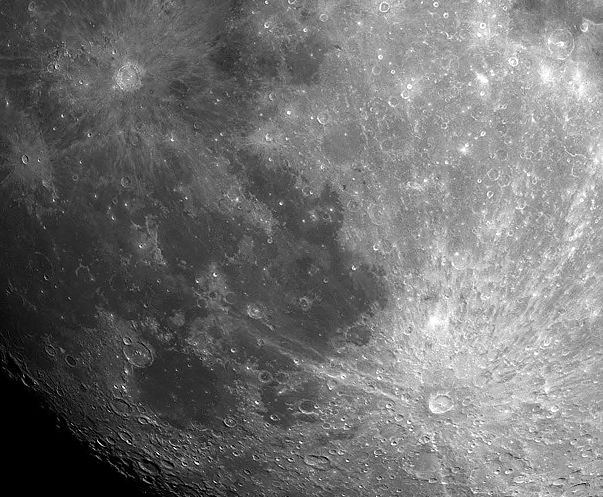
|
Credit: Steve Mandel,
Hidden Valley Observatory
Explanation:
Dazzling in binoculars or a small telescope, the
Moon is
pocked with impact craters.
During partial
lunar
phases, the craters along the terminator
are cast in dramatic relief by strong shadows.
But when the
Moon is full some
craters seem to sprout systems
of bright radial lines or rays.
This detailed
digital close-up
of the full Moon features two
prominent ray craters,
Copernicus (upper left) and Tycho (lower right),
each with extensive ray systems formed of light colored debris blasted out
by the crater-forming impacts.
In general, ray
craters are relatively young as their rays overlay
the
lunar terrain.
In fact, at 85 kilometers wide, Tycho, with its far reaching rays,
is the youngest large
crater on the nearside.
Crater Copernicus,
surrounded by dark mare which contrast
nicely with its bright rays, is 93 kilometers in diameter.
|
January February March April May June July August September October November December |
| ||||||||||||||||||||||||||||||||||||||||||||||||
NASA Web Site Statements, Warnings, and Disclaimers
NASA Official: Jay Norris. Specific rights apply.
A service of: LHEA at NASA / GSFC
& Michigan Tech. U.
Based on Astronomy Picture
Of the Day
Publications with keywords: ray crater - crater - Copernicus - Tycho crater - Moon
Publications with words: ray crater - crater - Copernicus - Tycho crater - Moon
See also:
